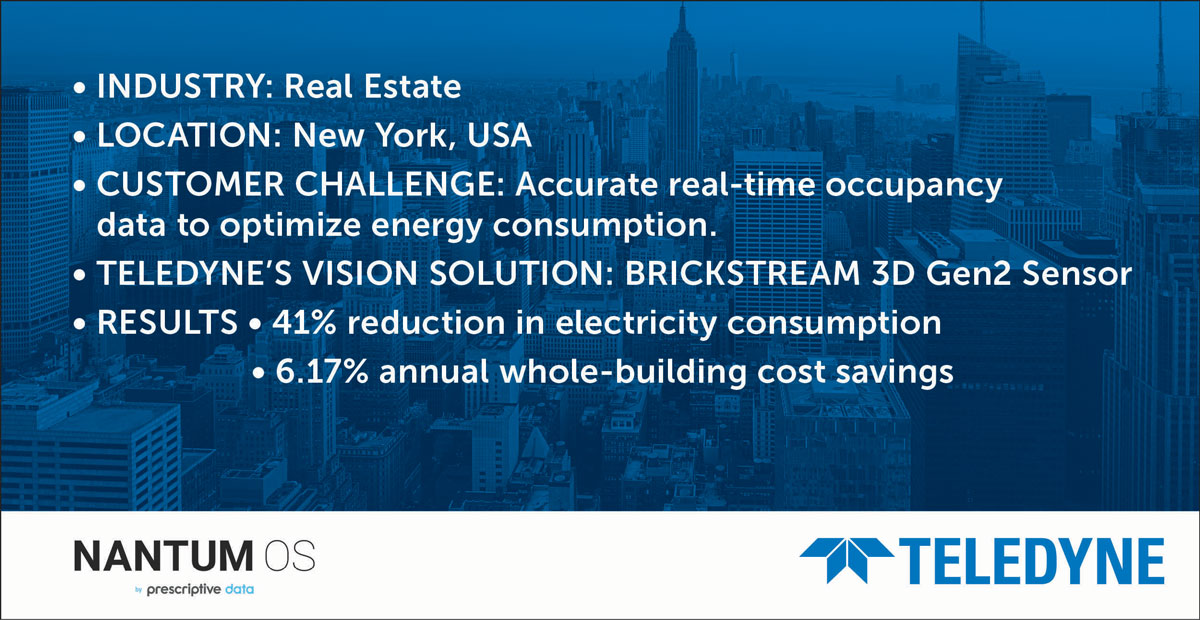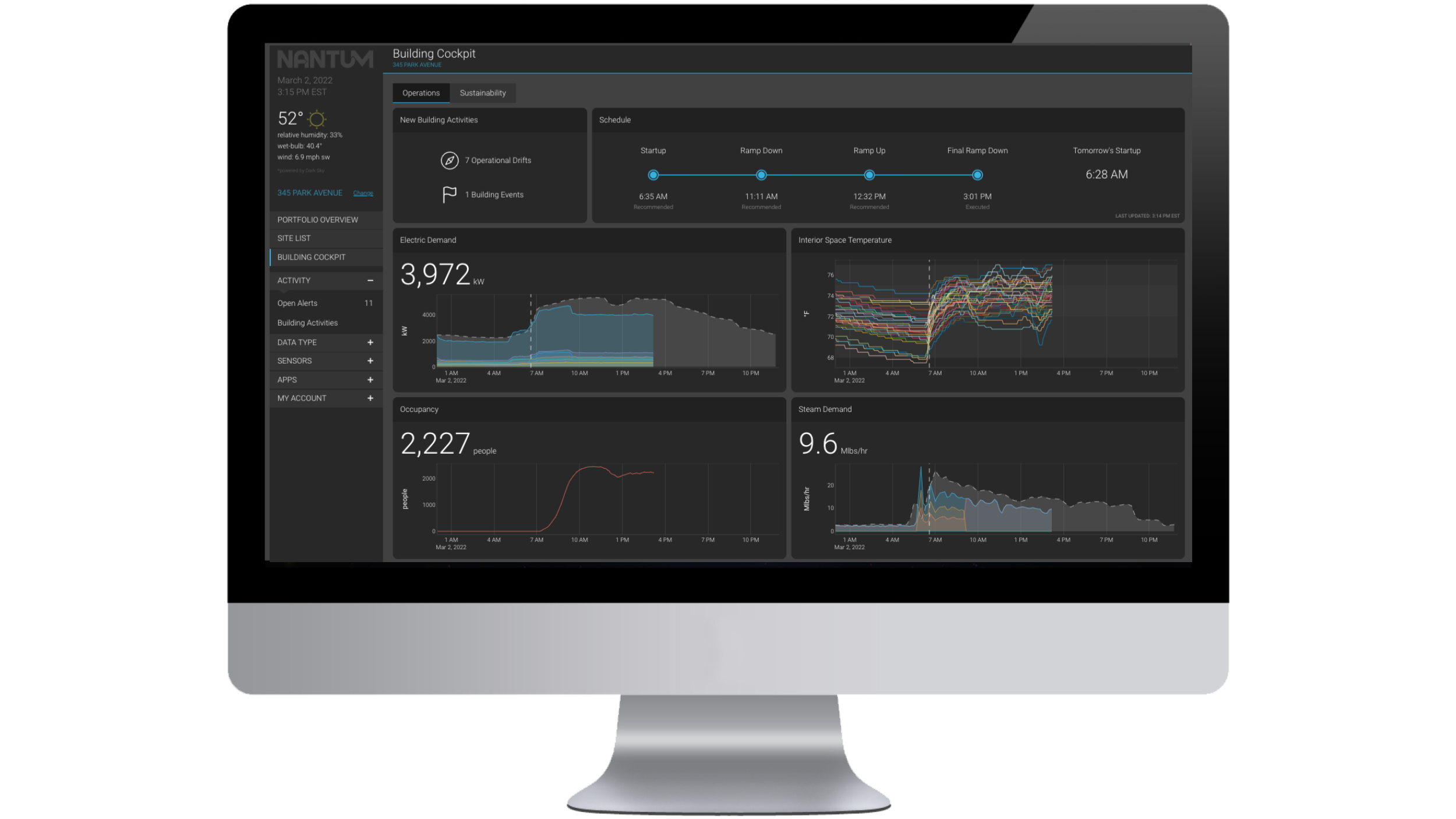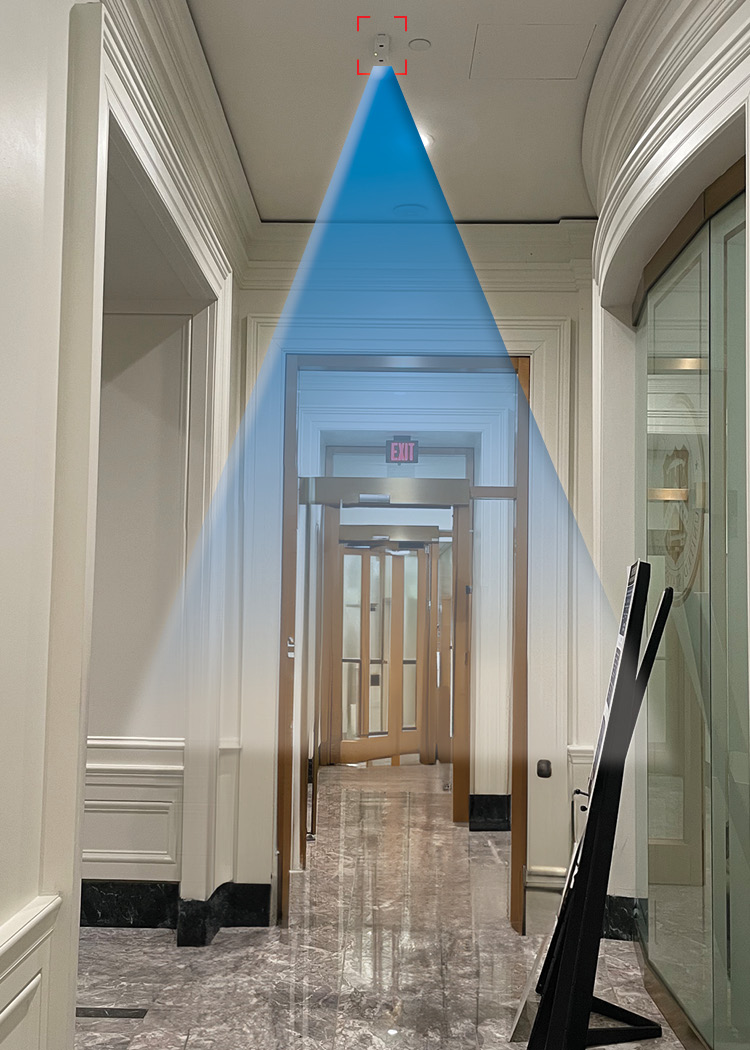Case Study: Achieving Accurate Commercial Building Occupancy Data Using Teledyne’s People Counting Solutions.
Prescriptive Data advances in real estate building automation by integrating Teledyne’s Brickstream 3D Gen2 Camera Sensors.
"Knowing how many people are in a building is crucial to implementing efficient operations. For example, if a building has a low number of people, the HVAC load may be reduced to save energy. This data can also be channeled to the floor level. Accuracy in occupancy data is paramount to the success of the energy-saving initiative and the comfort of all occupants." – Amit Paul, Vice President, Smart Buildings.

Case Study Summary.
Introduction
Prescriptive Data understands the complexity and uniqueness of buildings.
The Nantum OS solution, an award-winning building automation platform, was created by Prescriptive Data. The platform optimizes a building’s operational performance while saving energy, reducing carbon emissions, and lowering costs without sacrificing occupant health or comfort.
Combining historical data with predictive analysis and real-time occupancy data, Nantum OS enables buildings to hit their Environmental, Social, and Governance (ESG) goals via actionable insights.
Nantum OS
Types of customers
Nantum OS technology has been chosen by some of the top real estate leaders to address the climate change challenge. Commercial real estate owners include:
- BXP (Boston Properties)
- Brookfield Properties
- EQ Office
- Rudin Management
- JP Morgan
- Jamestown
Customer’s Challenge
Accurate real-time occupancy data to optimize energy consumption.
Nantum analyzes data from building systems and combines it with data from third-party sources. For example, combining Internet of Things (IoT) sensors like people counting cameras to prescribe operational adjustments that improve building energy and cost performance.

One of the most important types of data Nantum incorporates is occupancy.
People counting systems must deliver accurate occupancy data in several different scenarios such as
- The number of people passing through a doorway, or several individuals passing in either direction of a corridor,
- The distance between the individuals passing each other, or the identification of the individuals (building tenant or a staff), etc.
Also, ceiling height, network switch accessibility, and mount location play a factor in discrete mounting for tenant concerns over surveillance and installation costs.

Capturing data from corridors.
Solution
“We've tested and supported multiple occupancy sensors and have found Teledyne’s BRICKSTREAM 3D Gen 2 sensors to be reliable, incredibly supported, and competitively priced in the market.” – Amit Paul,Vice President, Smart Buildings.
BRICKSTREAM 3D Gen2 Sensor - 2510M-25W
The Teledyne occupancy solution involves an IoT (BRICKSTREAM camera sensors) and a BYOD (“Bring Your Own Device”) architecture.
- The BRICKSTREAM 3D Gen2 Sensor has the best-in-class stereo vision cameras that track occupants anonymously and unobtrusively to protect consumer privacy.
- The BYOD architecture enables users to display and monitor location occupancy on any device that supports a web browser and is connected to a wired or wireless (Wi-Fi) shared network.
“The BRICKSTREAM 3D Gen2 Sensor connects via a category 6 (CAT6) cable to the building’s network switch. The data is sent via Teledyne FLIR Scanning API to the Nantum cloud, and the total occupancy calculation is sent to Nantum OS.” –Amit Paul,Vice President, Smart Buildings.
A designated master camera serves as a reporting interface. It collects data from cameras at different locations freeing up the cloud processing load. Also, it enables connected network screen devices to display a real-time customizable dashboard with occupancy data and relevant messaging.
Mount and Bluetooth Tag Options
The BRICKSTREAM Cameras can be installed inside the building facility directly on the ceiling or with a recessed mount, and outside the building facility with an outdoor mount. Both mounts have tilting capabilities for maximum coverage and anonymity.
Also, Bluetooth tags in disk, card, and wearable wristband formats are available to differentiate staff from building tenants.
BRICKSTREAM Device Manager Option
The BRICKSTREAM Device Manager is a central command application for all BRICKSTREAM devices. It enables users to quickly access, manage, configure, and troubleshoot devices across multiple locations.

Complete Brickstream Product Package.
Results
Jamestown released its 11th Annual Sustainability and Social Responsibility Report outlining ESG efforts and key performance achievements in 2022 and the first half of 2023. Highlights include a 45% reduction in carbon emissions across the portfolio, achieved in part through the deployment of Nantum OS for occupancy-based HVAC automation.
An HVAC performance evaluation study conducted by Lawrence Berkeley National Laboratory installed 22 BRICKSTREAM Gen2 Sensors as a part of the Nantum OS platform to measure floor-by-floor building occupancy in real time. The annual energy savings were simulated under four scenarios: ECM (Energy Consumption Meter) 1-optimal start, ECM2-midday ramp down and up, ECM3-end-of-day ramp down, and ECM 4-early shutdown. The ECM 1, 2, 3 and 4 simulations showed 6.17% ($23,650 per year) annual whole-building cost savings (August 2022).
Connect with our People Counting Solutions Specialists for additional information.